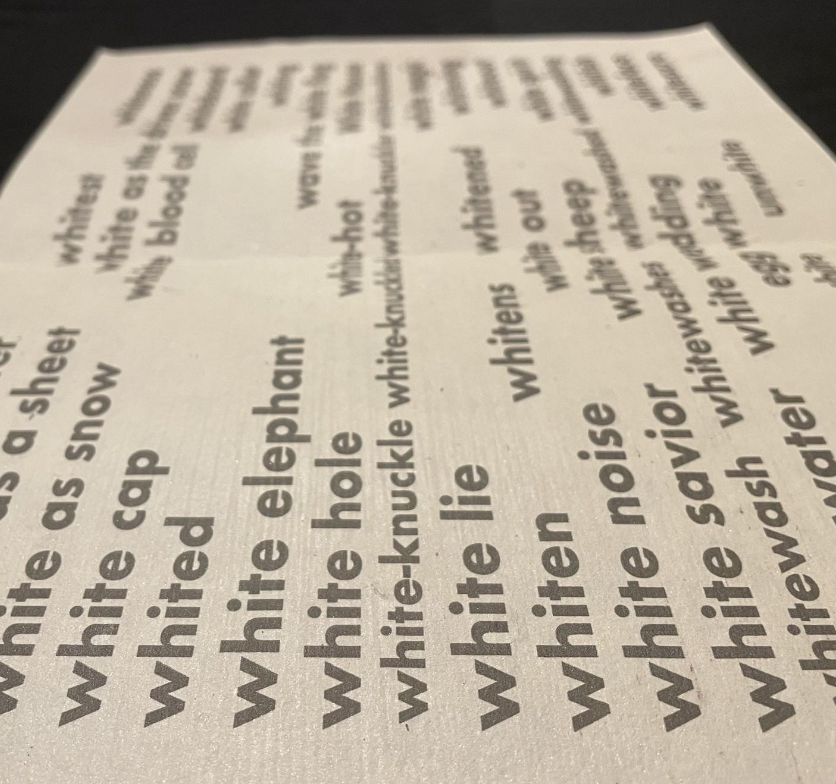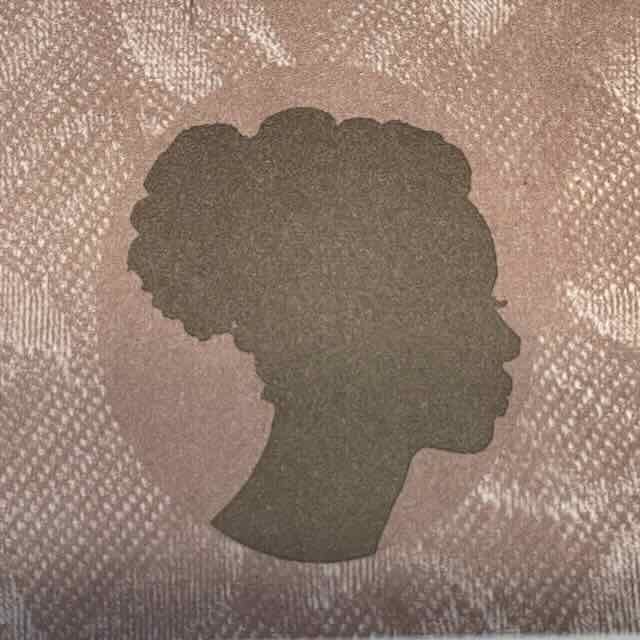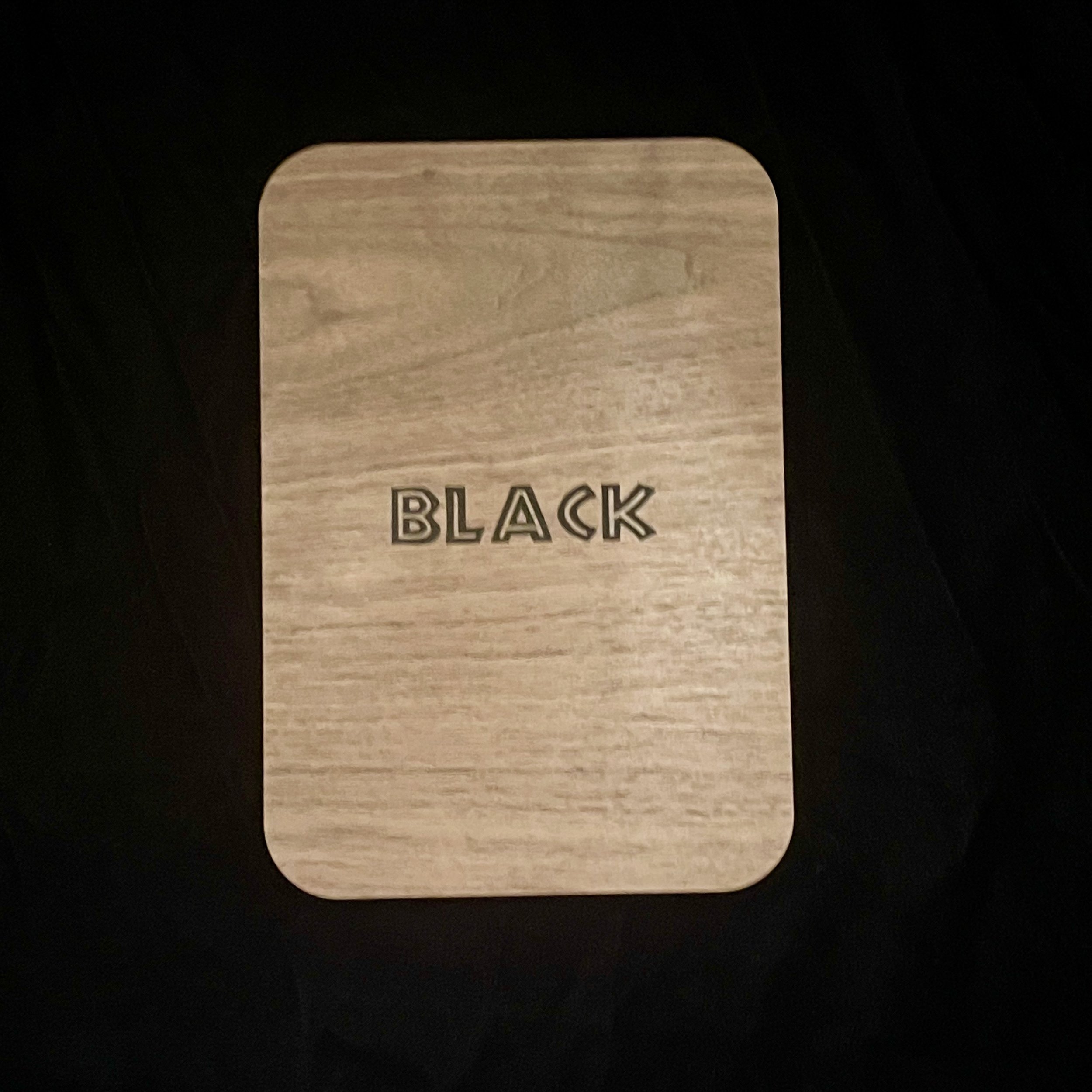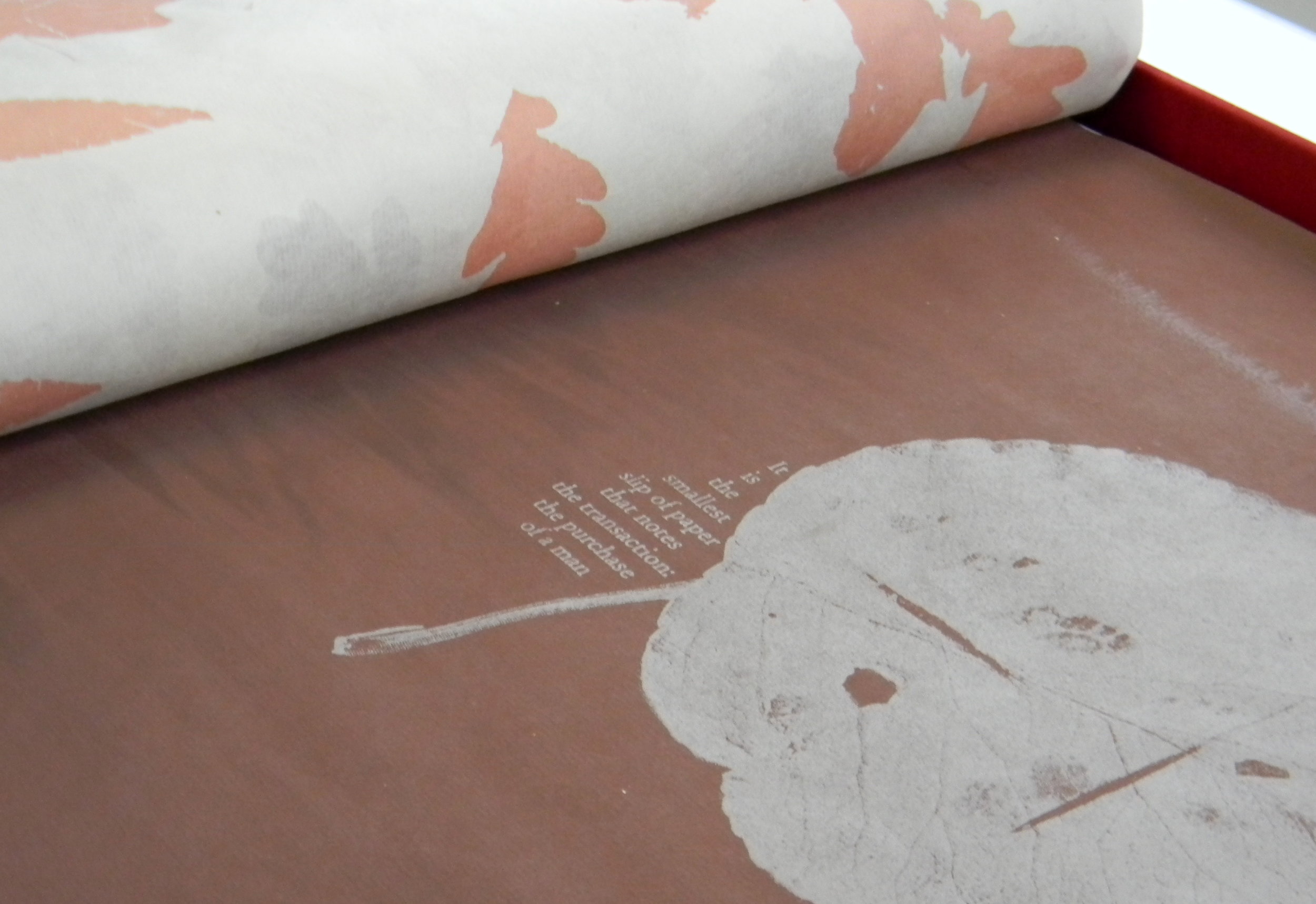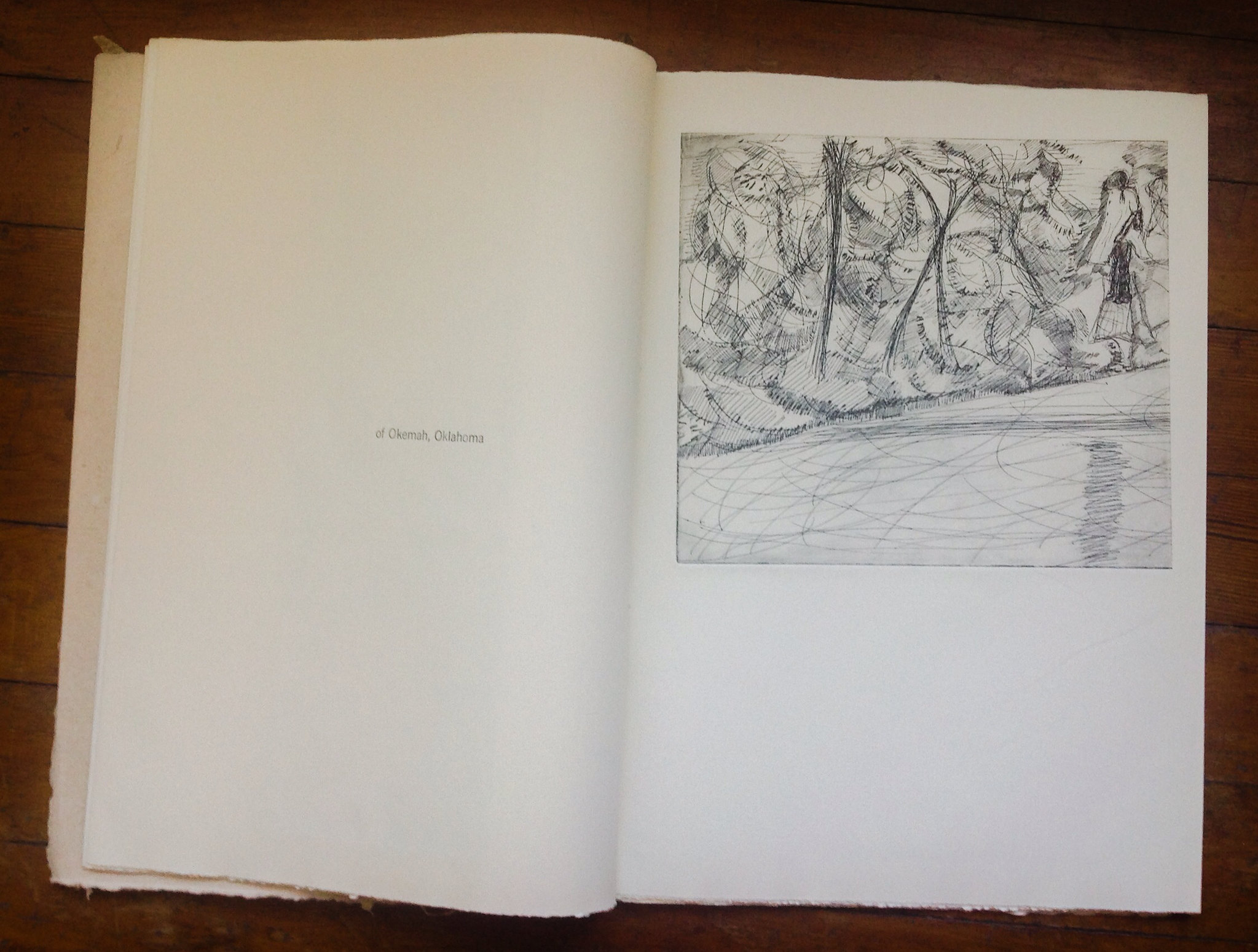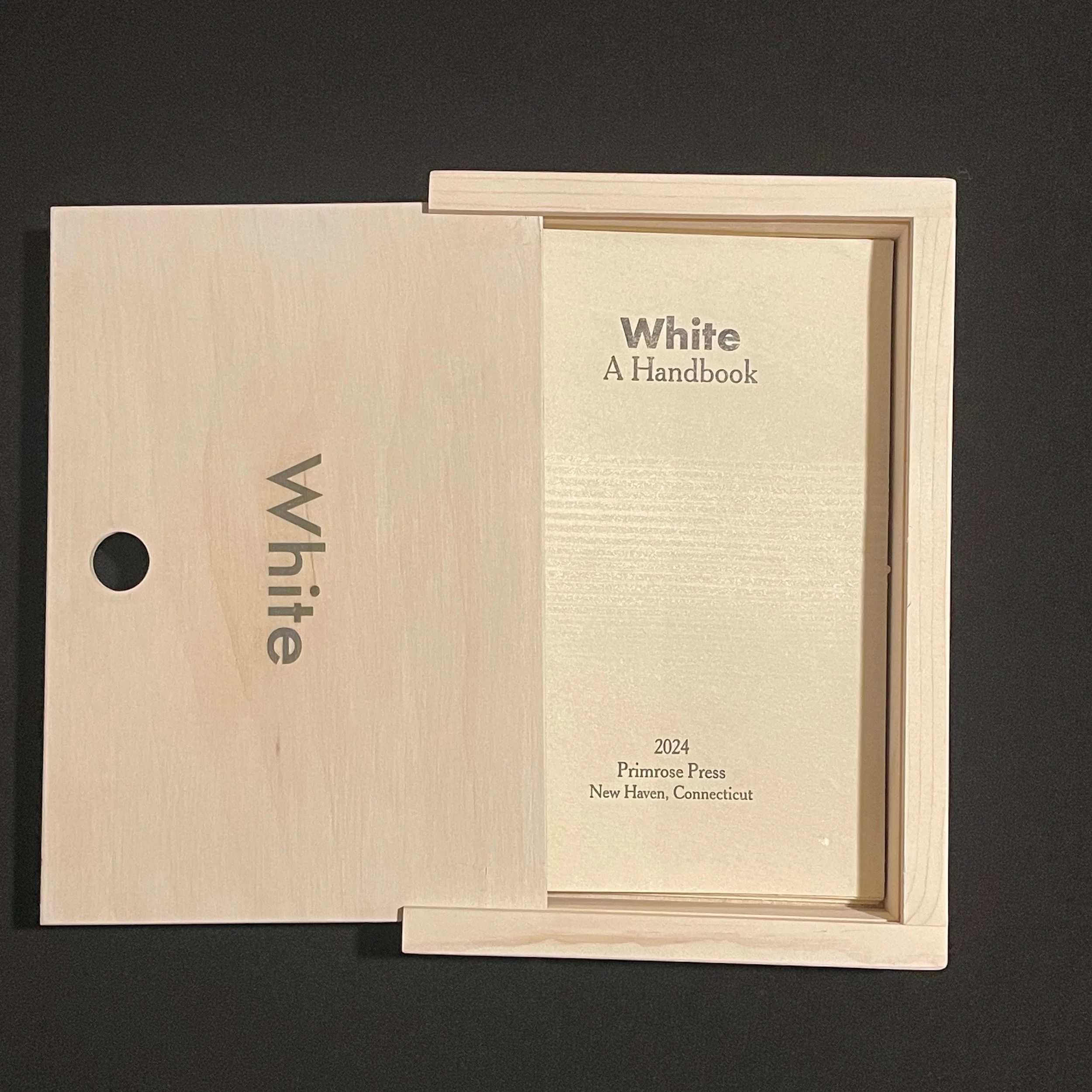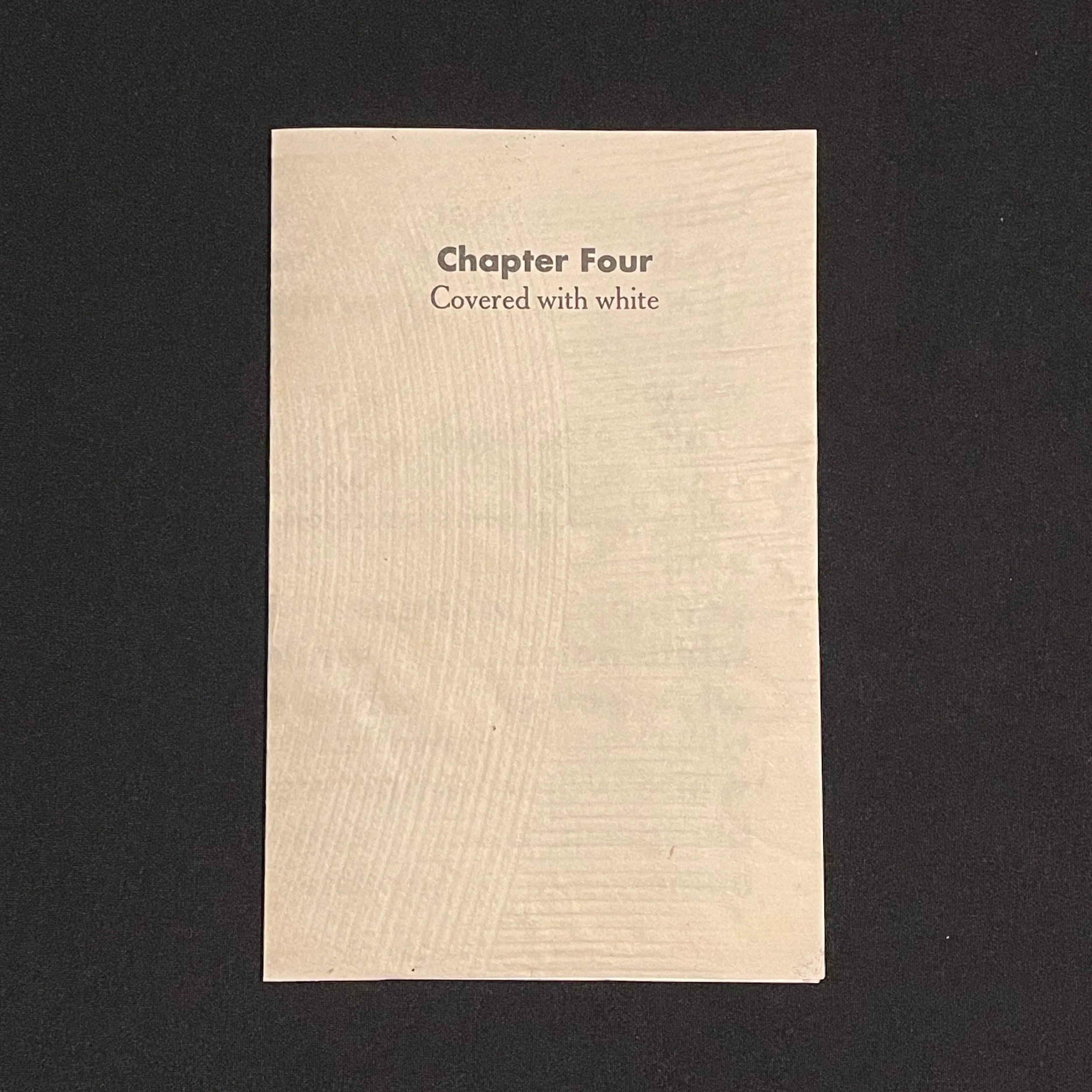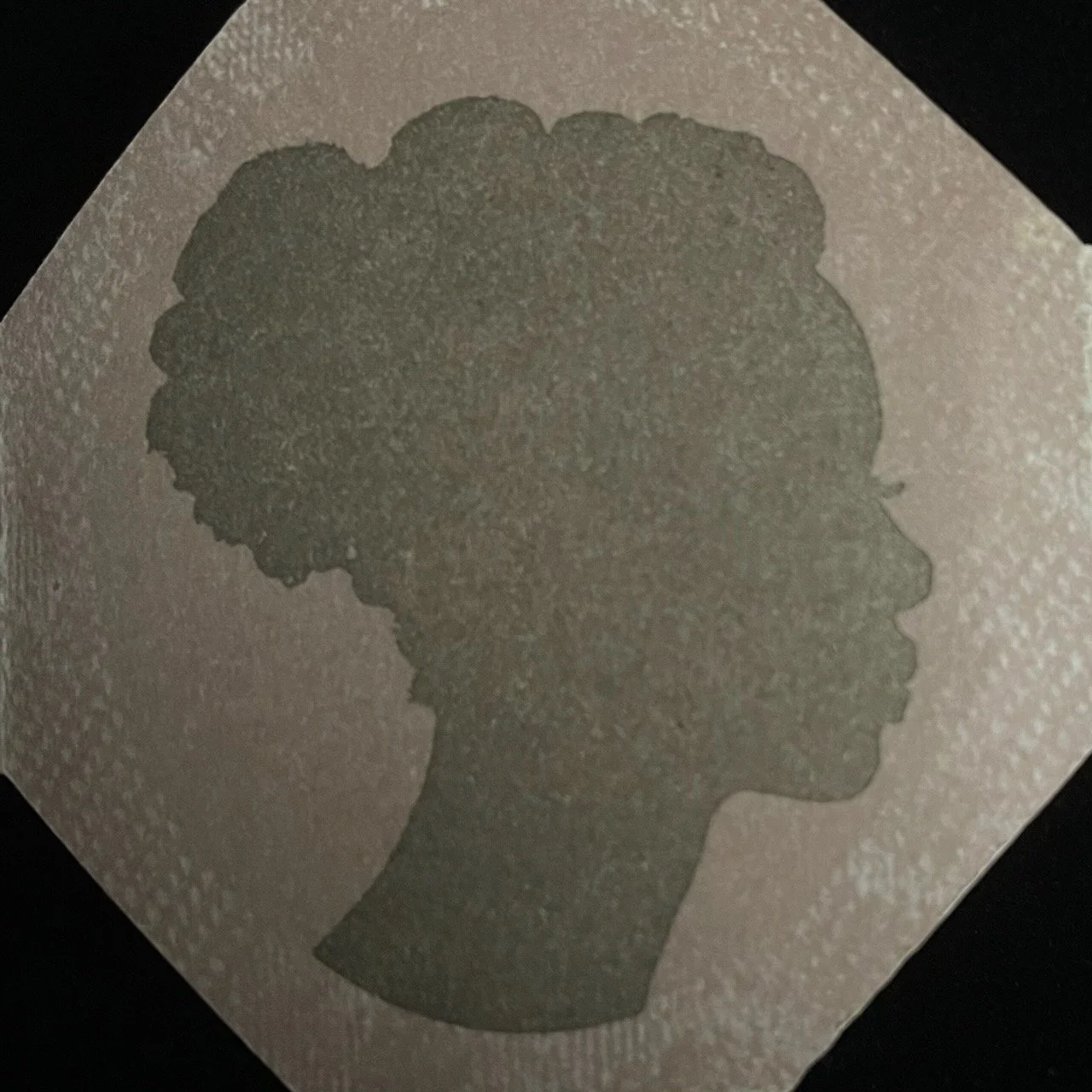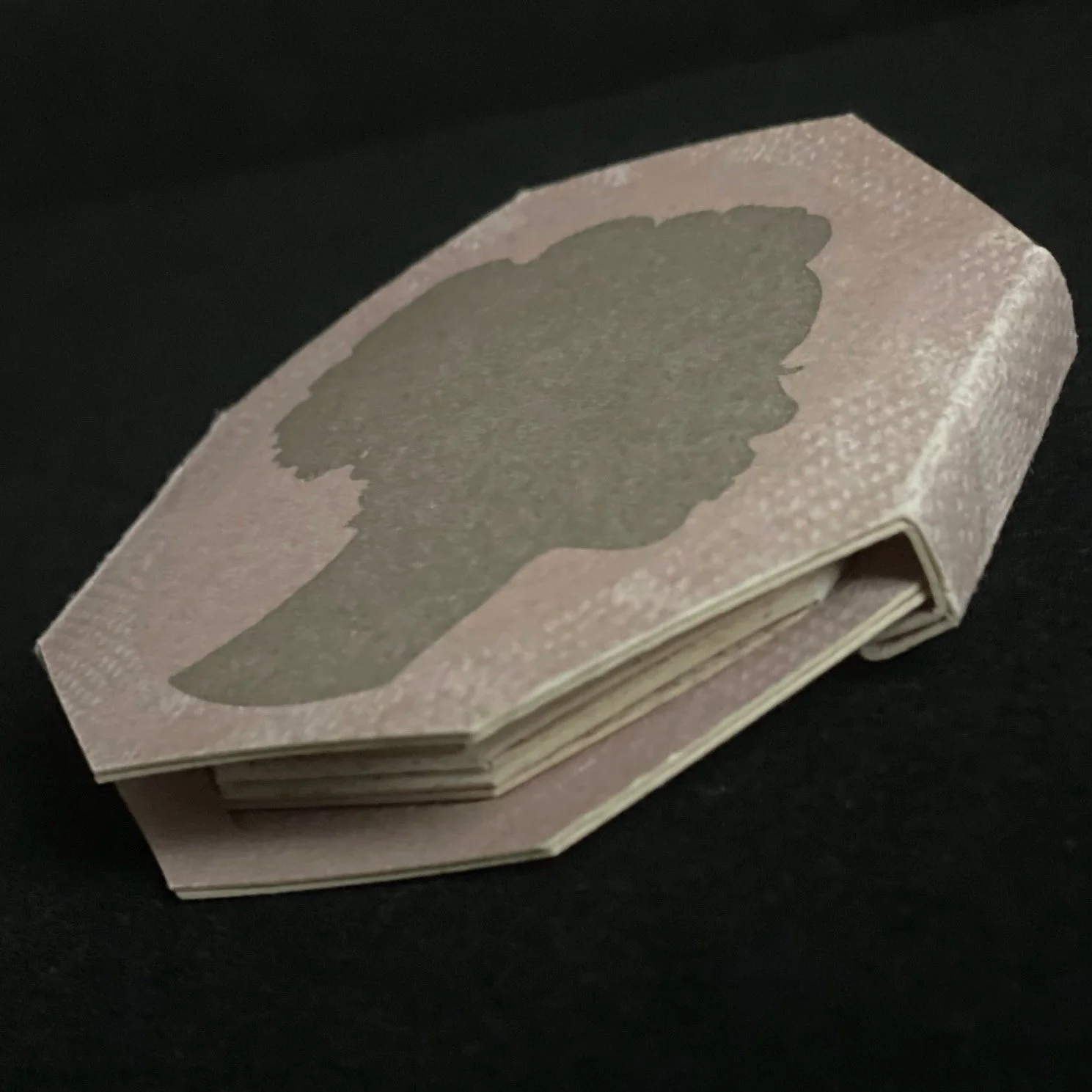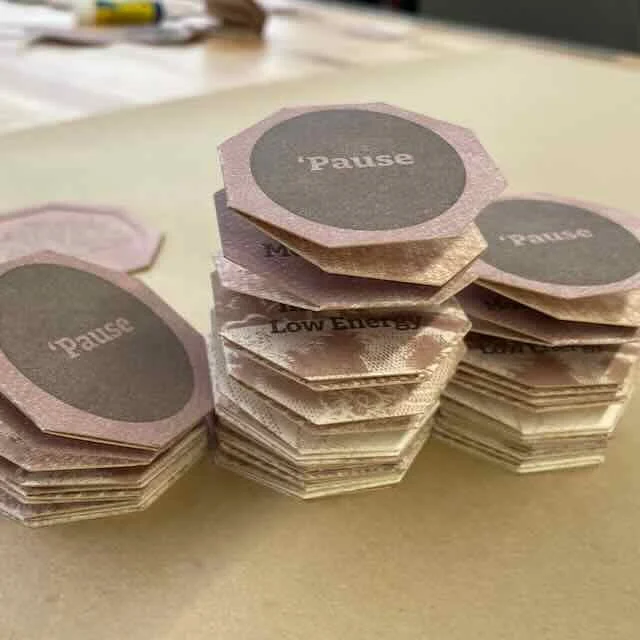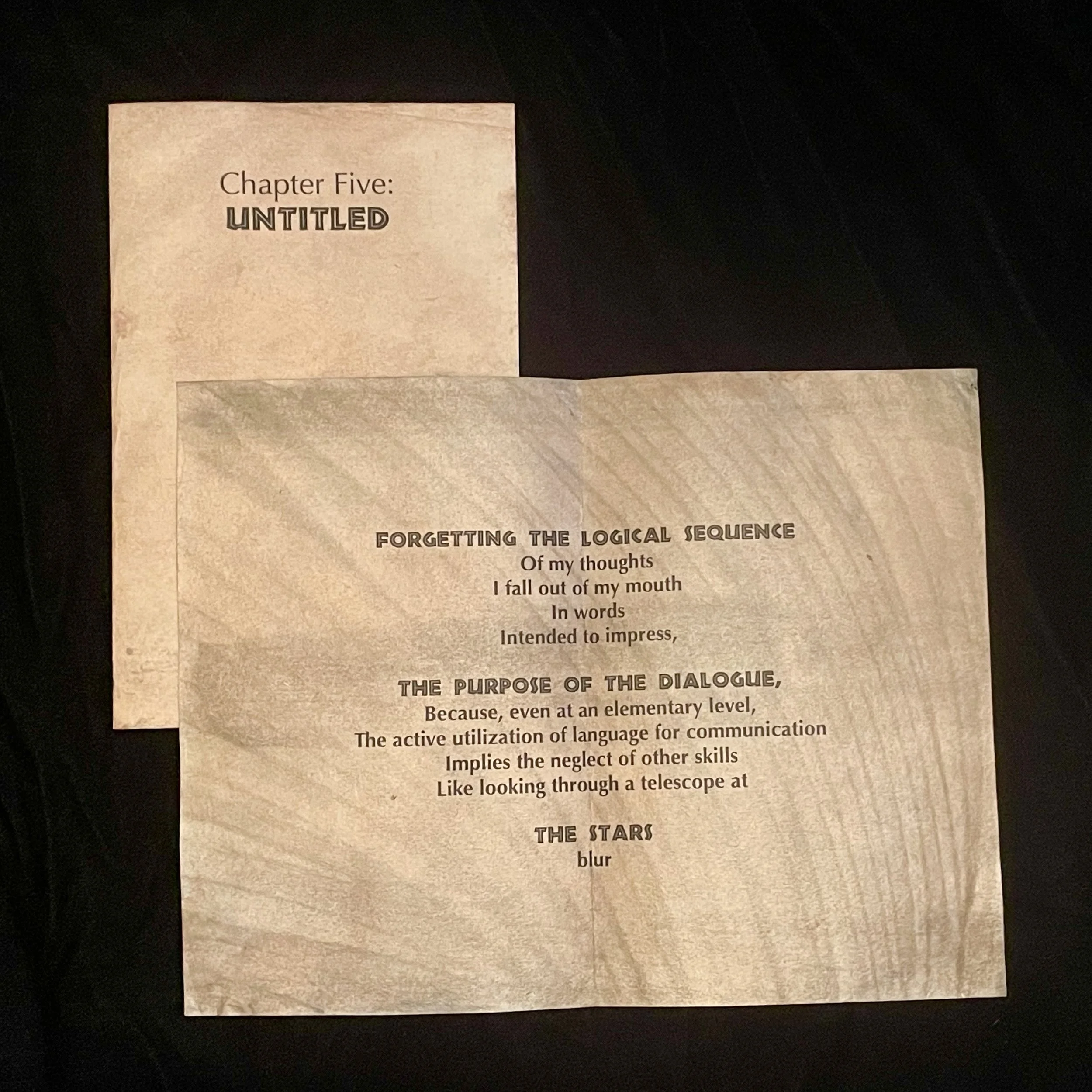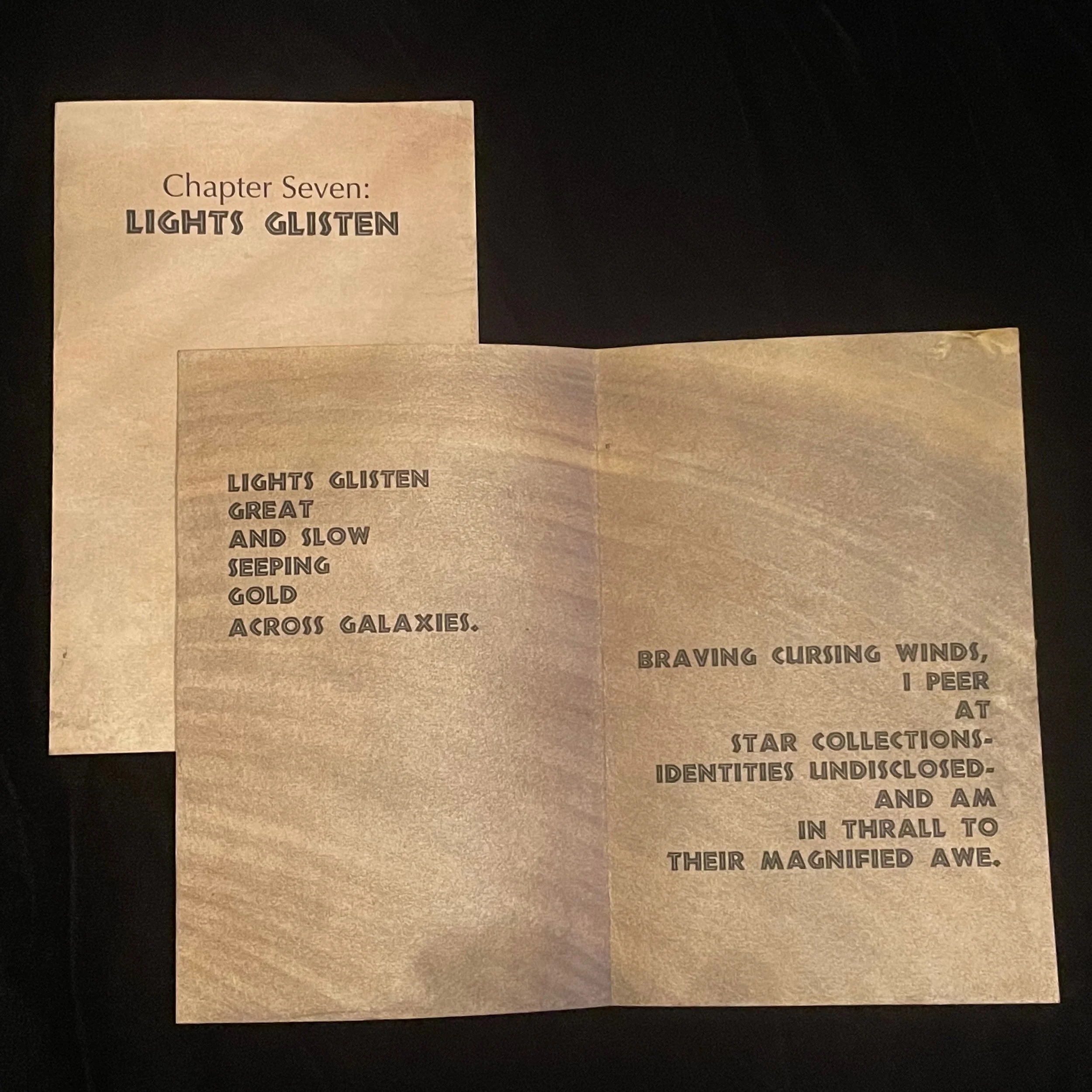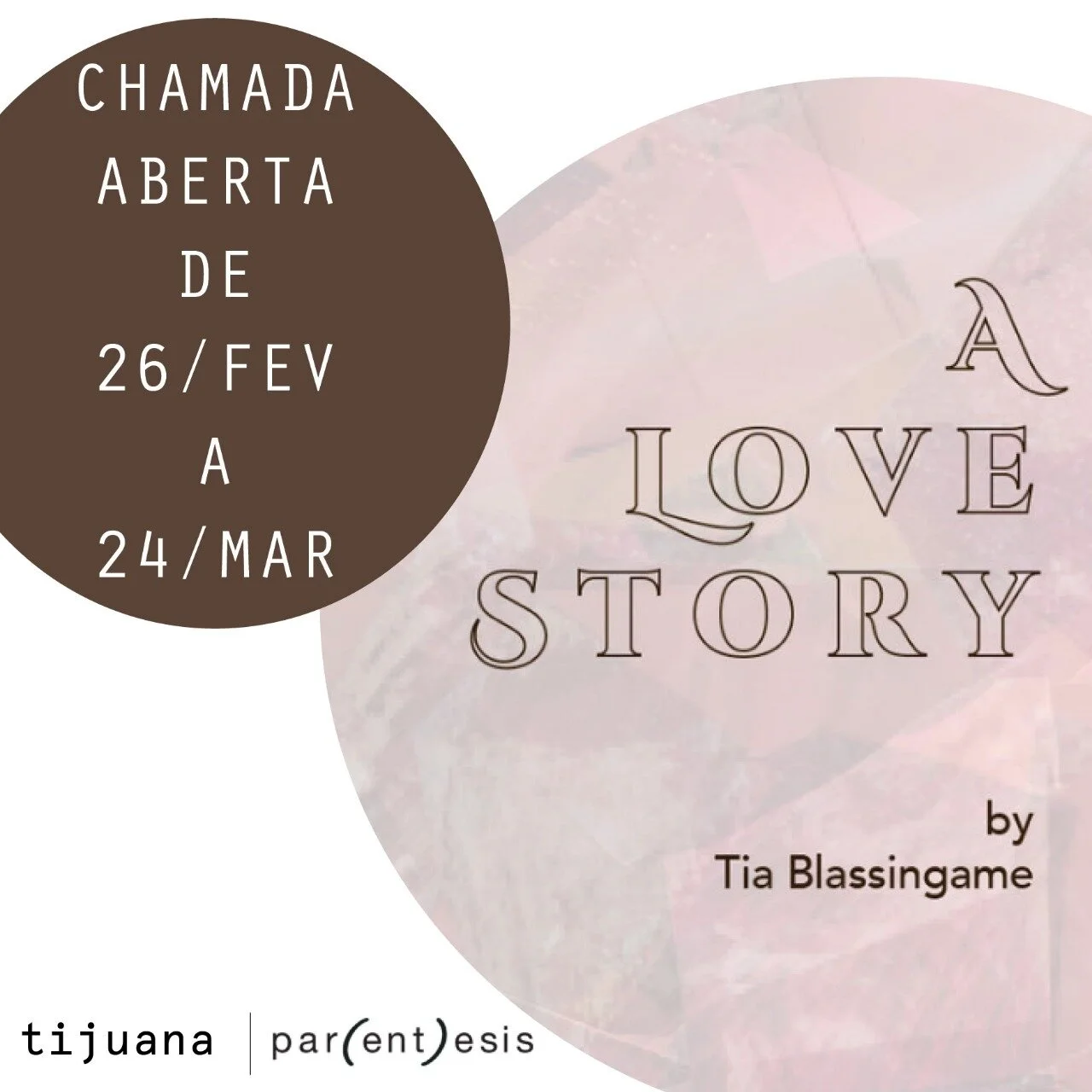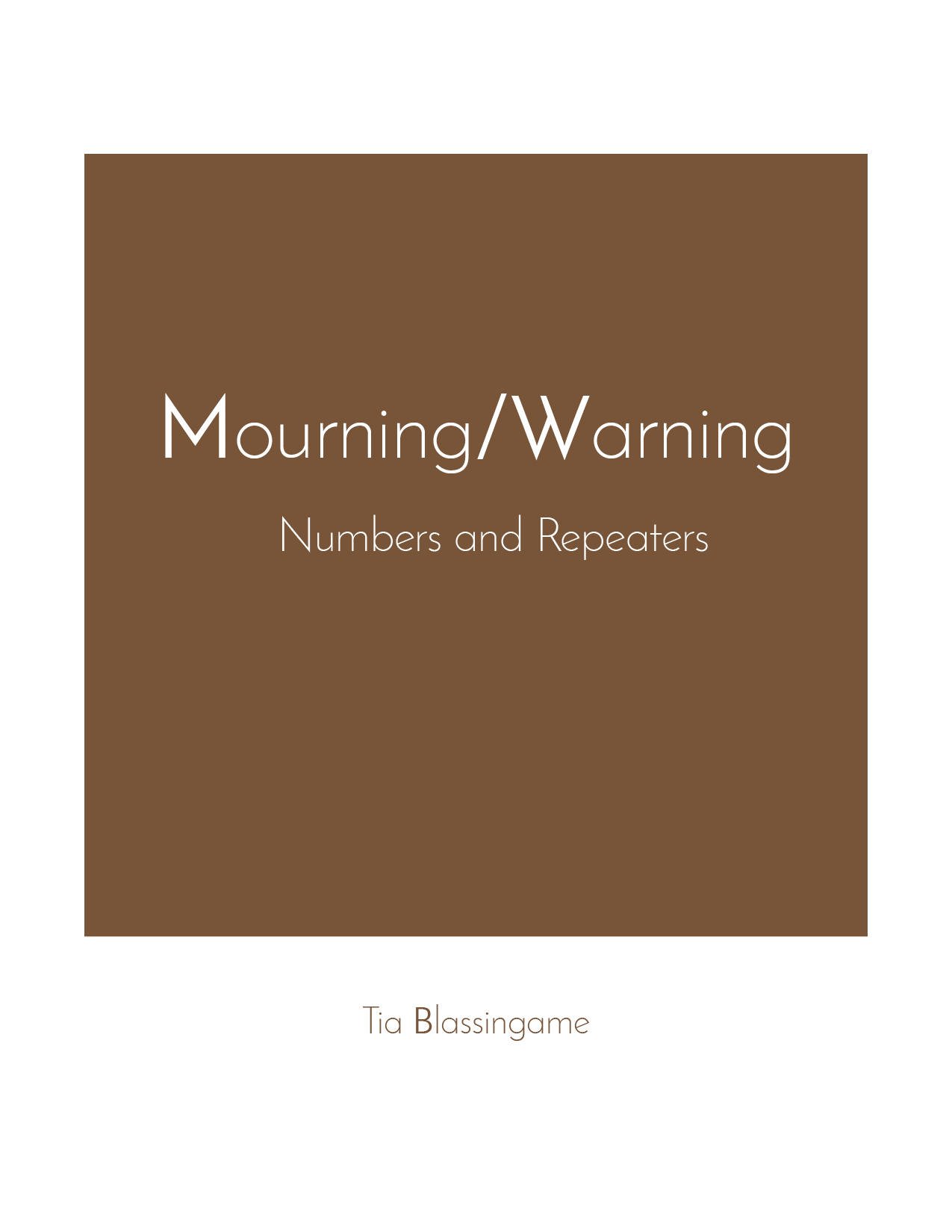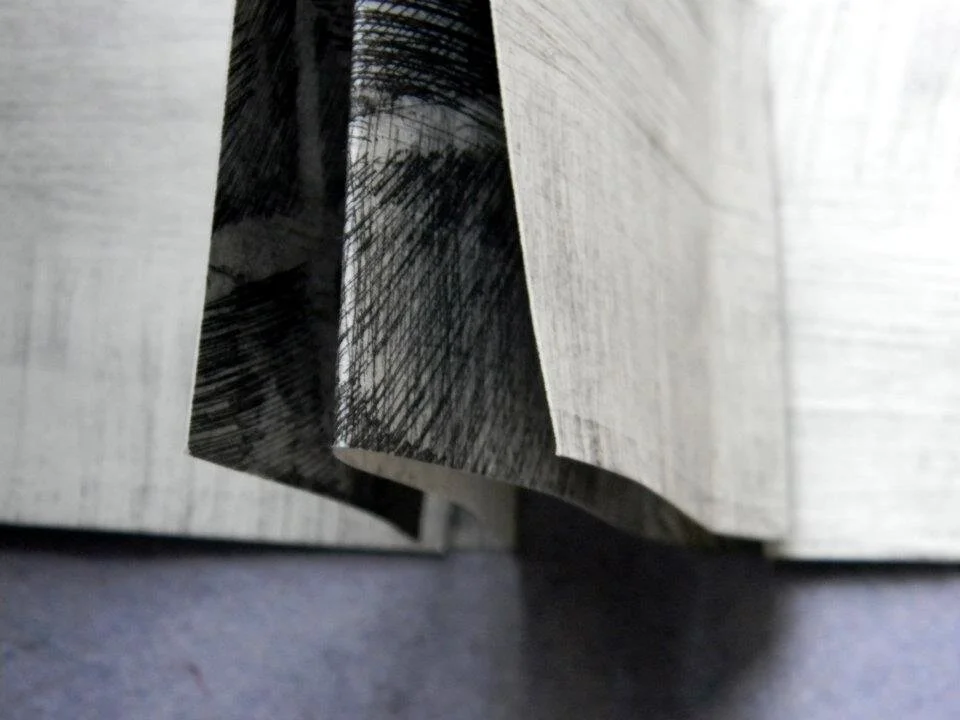'Pause artist’s book
2024, offset lithography, letterpress printing, laser cut, Somerset paper, 2” x 2” x ¼” (closed) accordion inside a 2.5” x 2.5” container with AI-generated silhouette image, 200 copies.
Copies available at the Shop at Minnesota Center for Book Arts (MCBA) in Minneapolis and the Print Center Gallery Store in Philadelphia.
‘Pause was offset printed at the Borowsky Center for Publication Arts by offset printer Erica Honson, letterpress printed in the letterpress studio, and laser cut in the Albert M. Greenfield Makerspace at the University of the Arts in Philadelphia, Pennsylvania over an unseasonably warm week at the end of April/start of May 2024, and was funded by the von Hess Visiting Artist Program. This artist’s book is signed and numbered by Blassingame.
With its three-color, offset printed imagery and metallic, letterpress-printed text, ‘Pause consists of the octagonal accordion text block, which is held in a locket-style container with a printed cover. With its letterpress-printed, AI-generated silhouette, the offset-printed and laser-cut container features a letterpress-printed, script-style dedication and colophon reminiscent of jewelry engraving. For this project, Blassingame selected a small group of Black women to complete a questionnaire about their awareness of, feelings and memories related to menopause. In the laser-cut, accordion text block, the quoted and excerpted responses were letterpress printed in a blackish-gold ink color in Bitter typeface, which plays upon the stereotype of the bitter or angry Black woman. Serving as the offset-printed backgrounds, scanned materials represent intimacy and vulnerability, softness and strength. ‘Pause is meant to celebrate and extend grace to Black women on their menopause journey, and normalize the discussion of menopause and changes to women’s bodies.
Collections: Baylor University, Brown University, Cleveland Institute of Art, Colorado College, Indiana University Indianapolis, James Madison University, Los Angeles Public Library, New York University, Ohio University, Ohio State University, Pennsylvania State University, Phoenix Public Library, Princeton University, Rhode Island School of Design, Rijksmuseum, Rollins College, Scripps College, Smith College, Swarthmore College, University of California at Berkeley, University of California at Los Angeles, University of Chicago, University of Georgia, University of Miami, University of Nebraska at Omaha, University of North Carolina at Chapel Hill, University of Virginia, Virginia Commonwealth University, Wesleyan University, Yale University, private collections
